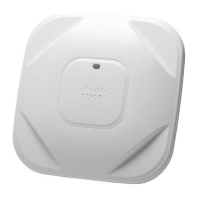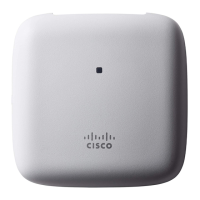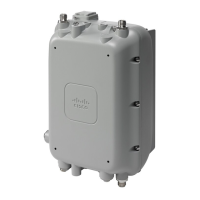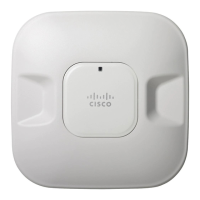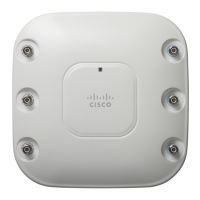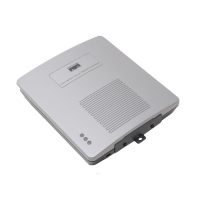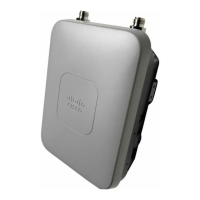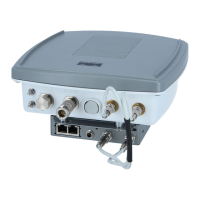Cisco Aironet Series 1700/2700/3700 Access Point Deployment Guide
Cisco Aironet Series 3700 Access Point
Clients that Support 3 Spatial Streams
Clients with 3SS support are starting to become commonplace. Because the new 802.11ac specification starts to get traction,
many newer client adapters will have the newer chipsets and support 3SS as a subset to 802.11ac. Additionally, unlike many
of our competitors the Cisco AP 1600/2600/3600 and 3700 fully supports all the DFS channels for more usable channels in the
5 GHz range. More clients, especially 802.11ac clients, will start to emerge supporting these newer channels in 802.11n modes
as well.
Currently the most popular 3SS client is the Apple 2011 MacBook Pro, because it is based upon the Broadcom BCM4331
chipset and a small USB adapter by Trendnet, “TEW 684UB”, based on the Ralink chipset.
Additionally, the Intel 5300 and 6300 has supported 3SS for a long time. Perhaps, because of the different hardware platforms
this card is installed in, testers have observed good throughput on many notebooks (+320 Mbps) and reduced throughput on
other notebooks such as 240 Mbps. If you experience low throughput using the Intel card, one suggestion might be to try a
MacBook Pro or Trendnet adapter, and if they perform well try another notebook with the Intel card or perhaps open a case
with Intel or the laptop manufacturer for a possible remedy. During the AP 3600 beta trials, we observed differences in
performance with different notebooks using the Intel 6300 card.
Note Sometimes it can be difficult to reliably maintain a 3SS link because it is easy for the client to rate-shift
out of the 3SS mode. The client plays an important role in the ability to maintain a 3SS link, so it can
vary with the quality of the client being used and the test environment.
The AP 3600 with its extra radio per band can use the extra redundant radio to beamform (because of ClientLink 2.0) and uses
this to maintain the advantage of 3SS links. Cisco ClientLink 2.0 can also improve the overall performance of 802.11n clients
using 1, 2, and 3 spatial streams and legacy .11a/g clients.
Understanding Beamforming – Legacy ClientLink 1.0 and 2.0
ClientLink 1.0 was first introduced with the 1250 and 1140 series APs; it is a method of creating a stronger signal on the
downlink side for 802.11a/g clients by hearing the clients on the uplink and then adjusting the transmitter timing so the signal
appears much stronger at the client end.
This feature used to be user configurable; however, starting with 7.2 code stream it is now switched on by default and is not
user configurable as there is no benefit to disabling it.
The AP 3600 fully supports ClientLink 1.0 for 802.11a/g clients but has a greater advantage because it also supports all 802.11n
clients including 1, 2, and 3 spatial stream clients. This capability is called ClientLink 2.0. There is a distinct advantage with
ClientLink 2.0 over the 802.11n enhanced beamforming specification, because ClientLink 2.0 works with all clients today and
does not require any client sounding or support (Figure 32).
Figure 58 ClientLink 2.0
With beamforming technology, changing the timing of two transmitters creates a stronger signal for the receiver, e.g, a client
device. This is referred to as constructive interference. Sometimes, however, the opposite happens and the signals cancel each
other out. This is called destructive interference. Refer to Figure 59.
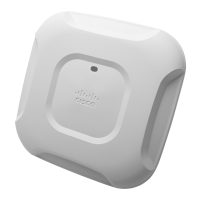
